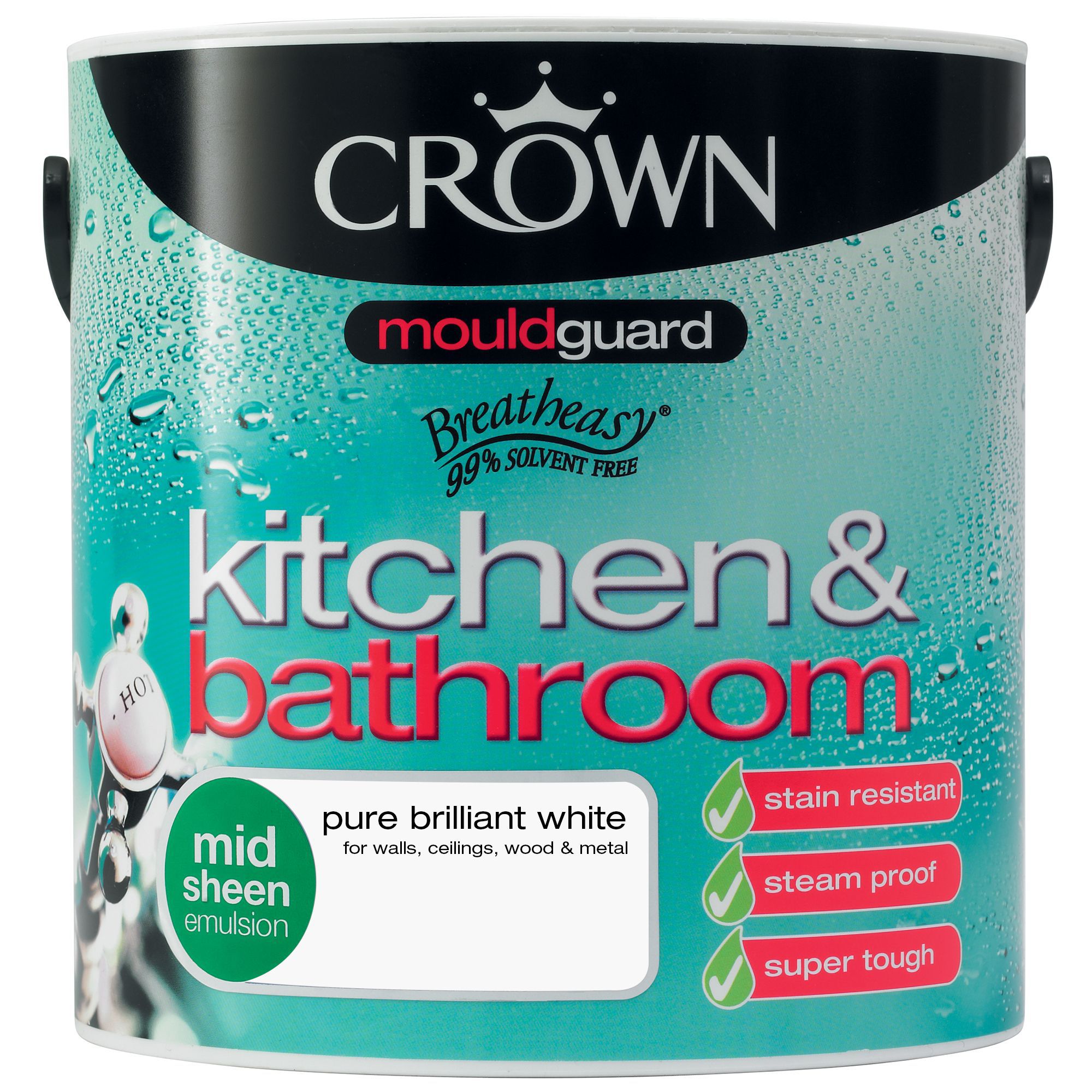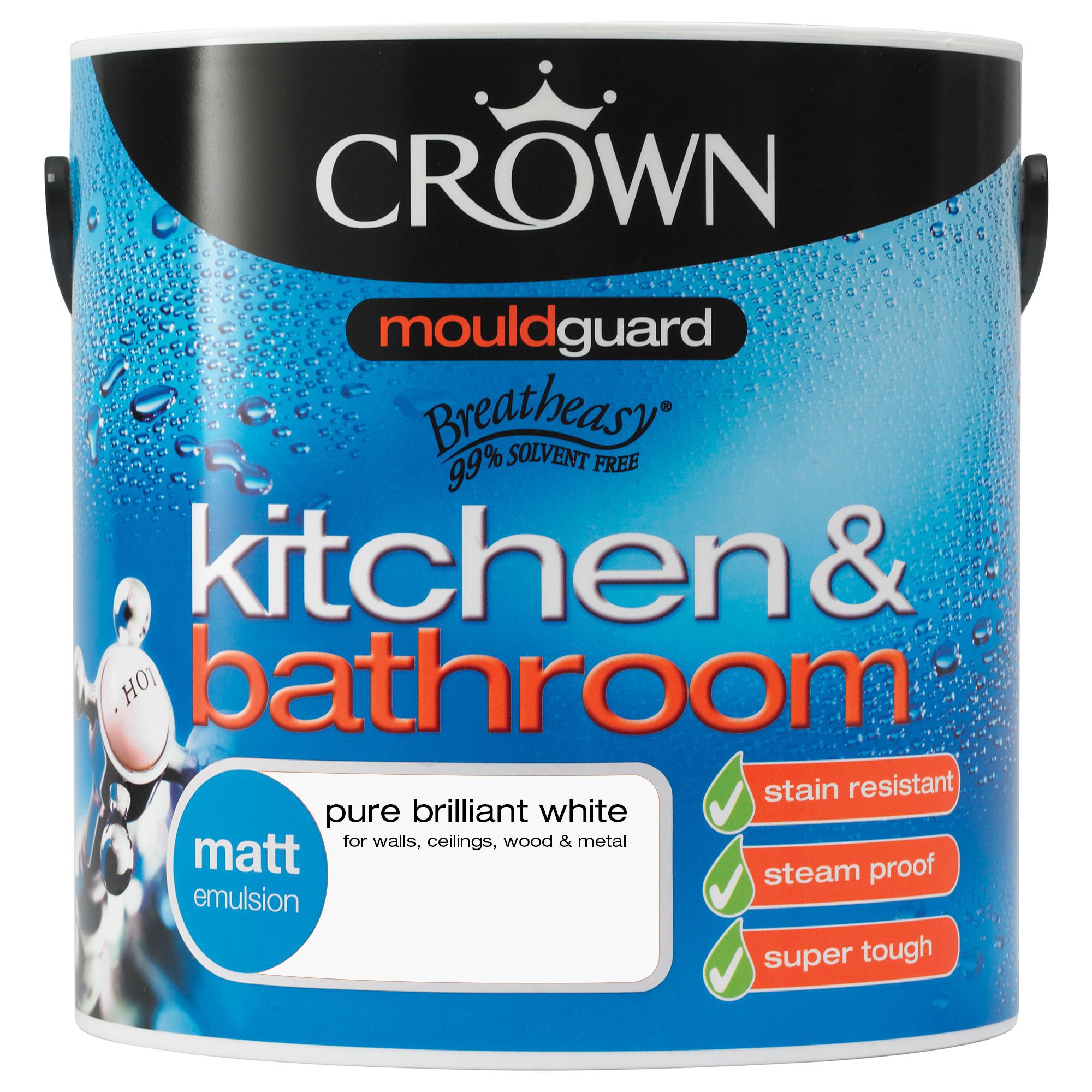Choosing the Right Paint for Kitchens and Bathrooms: Kitchen And Bathroom Paint
Kitchens and bathrooms are high-traffic areas that require special consideration when choosing paint. These spaces are often exposed to moisture, humidity, and frequent cleaning, which can wear down standard paint. Choosing the right paint type and sheen level is crucial for ensuring durability, a clean look, and a long-lasting finish.
Paint Types for Kitchens and Bathrooms, Kitchen and bathroom paint
The type of paint you choose for your kitchen and bathroom will determine its durability, resistance to moisture and stains, and ease of cleaning. Here are some popular options:
- Acrylic Latex Paint: This type of paint is water-based, making it easy to clean up with soap and water. Acrylic latex paint is also known for its good adhesion, durability, and resistance to mildew. It is a versatile option for both kitchens and bathrooms, particularly for walls and ceilings.
- Enamel Paint: Enamel paints are oil-based and offer excellent durability, moisture resistance, and stain resistance. They are often used for trim, cabinets, and doors, providing a hard, glossy finish that can withstand frequent cleaning. However, enamel paints require mineral spirits for cleanup, which can be more challenging than water-based paints.
- Epoxy Paint: Epoxy paints are known for their extreme durability and resistance to moisture, chemicals, and abrasion. They are a good choice for high-traffic areas, such as kitchen floors and bathroom countertops. However, epoxy paints are more difficult to apply than other types of paint and require special preparation.
Paint Sheen Levels
Paint sheen refers to the level of glossiness or shine on the paint surface. Different sheen levels offer varying levels of durability, light reflection, and ease of cleaning. Here’s a breakdown of common sheen levels and their suitability for kitchens and bathrooms:
- Flat: Flat paint has no shine and is good for hiding imperfections. However, it is not very durable and can be difficult to clean. It is generally not recommended for kitchens and bathrooms.
- Eggshell: Eggshell paint has a slight sheen, making it more durable and easier to clean than flat paint. It offers a soft, subtle look and is a good option for walls in kitchens and bathrooms.
- Satin: Satin paint has a medium sheen, making it more durable and washable than eggshell paint. It reflects light well, making it a good choice for areas that need a bit more brightness. It is a popular choice for kitchens and bathrooms, especially for walls and trim.
- Semi-Gloss: Semi-gloss paint has a high sheen, making it very durable and easy to clean. It is often used for trim, cabinets, and doors, as it provides a hard, glossy finish that can withstand frequent cleaning.
- Gloss: Gloss paint has the highest sheen, making it the most durable and washable option. It is often used for trim, doors, and cabinets in high-traffic areas. However, gloss paint can highlight imperfections, so it is best used on smooth surfaces.
Color Selection and Design Inspiration
Choosing the right colors for your kitchen and bathroom can significantly impact the overall look and feel of these spaces. It’s important to consider your personal preferences, the style of your home, and the function of each room when selecting colors.
Popular Color Palettes
Color palettes can be categorized into different schemes based on their color combinations. These schemes offer a framework for creating visually appealing and harmonious spaces.
- Contrasting Palettes: These palettes use colors that are opposite each other on the color wheel, creating a high-contrast and visually striking effect. Examples include black and white, navy blue and orange, or teal and coral. This approach can create a dramatic and modern aesthetic.
- Monochromatic Palettes: These palettes utilize different shades, tints, and tones of a single color. This creates a sense of unity and sophistication. For example, a monochromatic palette could use various shades of gray, blue, or green. This scheme offers a calming and cohesive feel.
- Accent Color Combinations: This approach involves using a dominant base color and incorporating accent colors strategically. For instance, you could use a neutral base color like white or beige and introduce pops of color with accent walls, furniture, or accessories. This allows for flexibility and personalization.
Color Trends
Color trends in kitchen and bathroom design often reflect current design aesthetics and societal preferences. These trends offer inspiration for creating stylish and contemporary spaces.
- Natural Elements: Incorporating colors inspired by nature is a popular trend, creating a sense of tranquility and connection to the outdoors. Earthy tones like greens, browns, and blues are frequently used, mimicking the colors of foliage, wood, and water. This trend can be achieved through paint colors, natural materials, or incorporating plants and greenery.
- Bold Accents: Adding bold accents with vibrant colors can inject personality and create a focal point in a space. This trend often involves using bright colors like reds, yellows, or blues on accent walls, cabinetry, or backsplashes. This approach can create a lively and energetic atmosphere.
- Calming Hues: Soft and calming colors like pastels, grays, and blues are often used to create a relaxing and serene atmosphere in kitchens and bathrooms. These colors can help to promote a sense of peace and tranquility, making these spaces more inviting and comfortable.
Psychology of Color
Color psychology explores the impact of colors on human emotions, behavior, and perceptions. Understanding color psychology can help you select colors that create the desired mood and ambiance in your kitchen and bathroom.
- Blue: Often associated with calmness, serenity, and trust. It can promote relaxation and create a sense of peace. It’s a popular choice for bathrooms, creating a spa-like atmosphere.
- Green: Represents nature, growth, and renewal. It can create a sense of harmony and tranquility, making it suitable for both kitchens and bathrooms. Green can also stimulate appetite, making it a good choice for kitchens.
- Yellow: Associated with happiness, optimism, and energy. It can brighten a space and create a cheerful atmosphere. However, too much yellow can be overwhelming, so use it sparingly.
- Red: Stimulates energy, passion, and appetite. It can create a warm and inviting atmosphere in a kitchen. However, red can also be perceived as aggressive, so it’s best to use it in small doses.
- White: Represents purity, cleanliness, and simplicity. It can create a spacious and airy feel, making it a popular choice for kitchens and bathrooms. White can also be used as a neutral backdrop for bolder colors.
Kitchen and bathroom paint – Choosing the right paint color for your kitchen and bathroom can significantly impact the overall feel of these spaces. While a bright white can create a sense of spaciousness, a bold color can add personality. If you’re looking to maximize space in a small bathroom, check out these diy small bathroom hacks.
Remember, even subtle color choices in your kitchen and bathroom can make a big difference in how you experience these important rooms.
Choosing the right paint for your kitchen and bathroom is crucial, as these rooms experience high moisture and wear. While selecting a durable paint is important, you also want to consider the overall aesthetic. If you’re planning to install new flooring, like vinyl plank, it’s a good idea to choose a paint color that complements the flooring.
For example, if you’re installing vinyl plank flooring in your bathroom toilet , a light gray or white paint can create a clean and modern look. Ultimately, the paint color you choose should reflect your personal style and create a cohesive look throughout your kitchen and bathroom.

